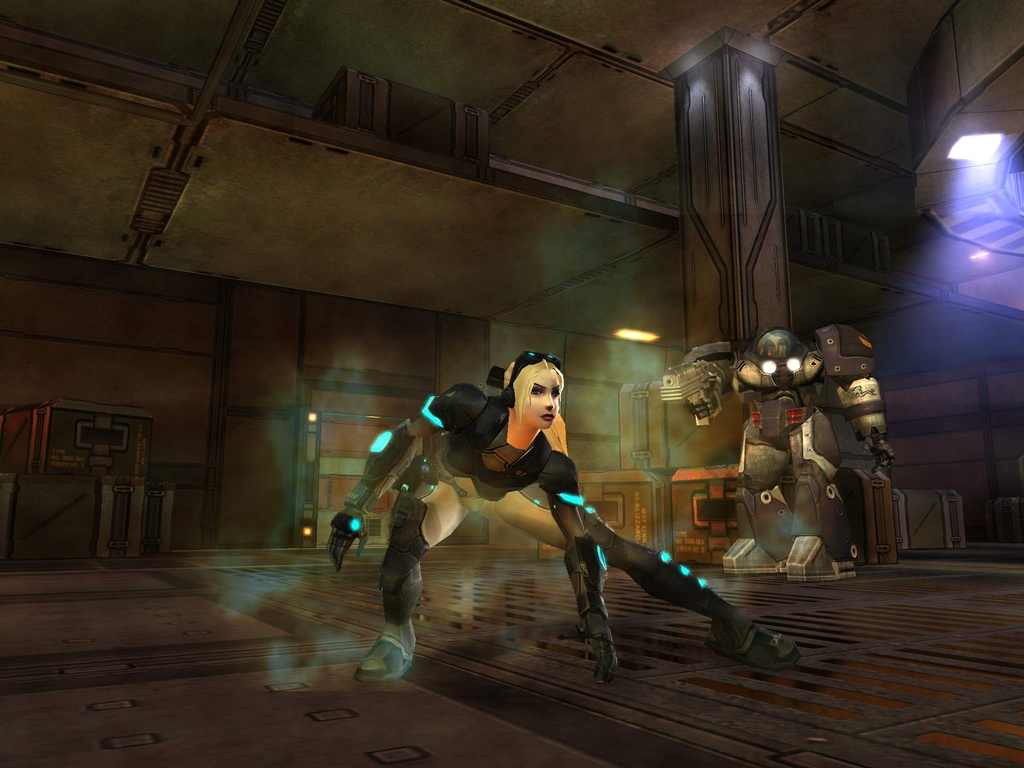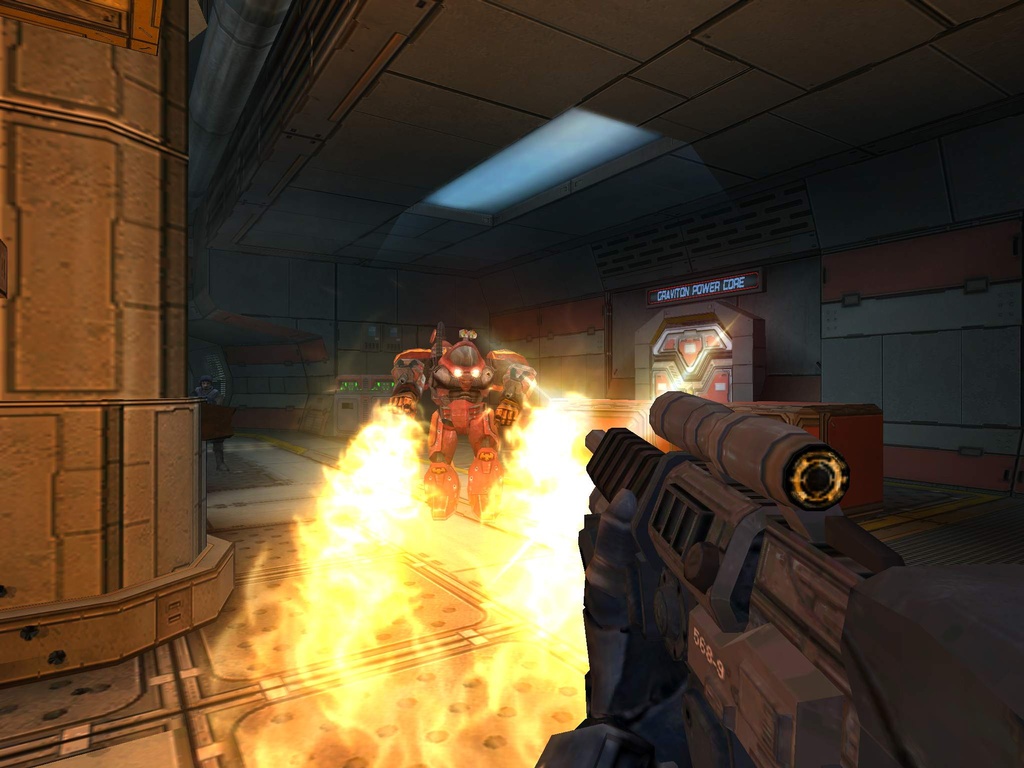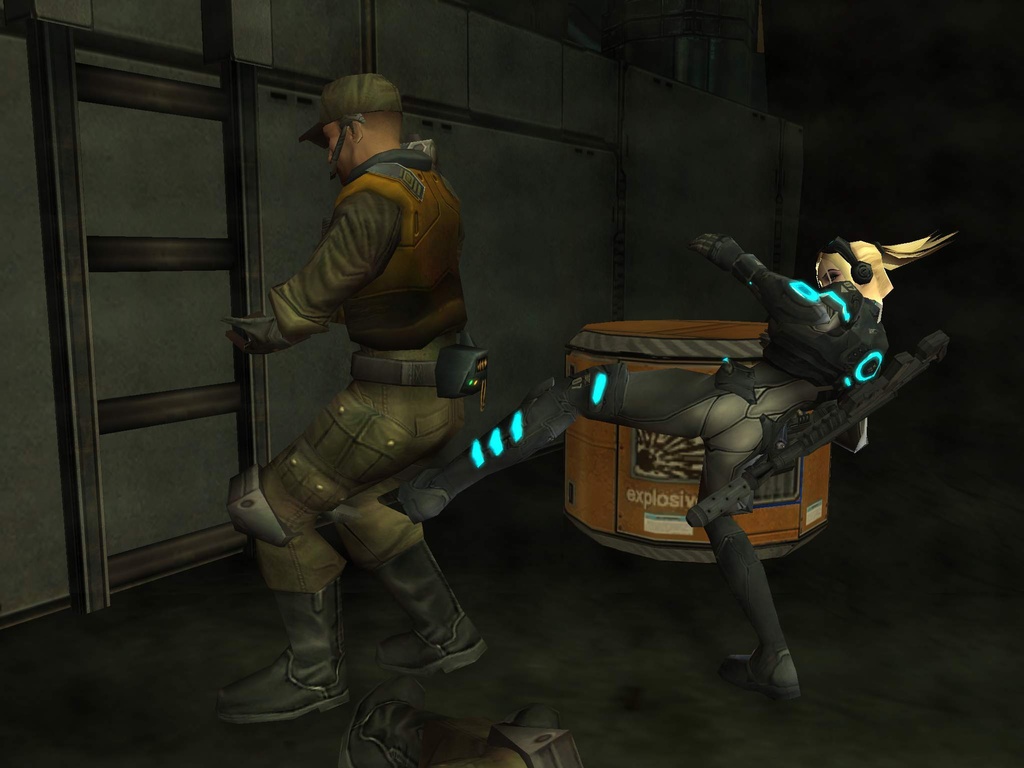Starcraft: Ghost Updated Multiplayer Hands-On - Zerg Rush!
We've got a firsthand report on the intense multiplayer action in Starcraft: Ghost.
ANAHEIM, Calif.--We had a chance to take an updated hands-on look at the online multiplayer in Blizzard's upcoming shooter, Starcraft: Ghost. One of the most significant revelations at Blizzcon is, as you may already have heard, that Starcraft's zerg, a race of wormlike alien monsters capable of taking possession of other life forms by "infesting them," are playable in Ghost's multiplayer modes. We had a chance to try out two different multiplayer modes: the "global conflict" mode that was on display at E3 earlier this year, and a team-based, zerg-versus-marines mode called "invasion." The version of global conflict we saw at E3 pitted two teams of marines (the playable human faction from Starcraft) against one another, attempting to take control of and pilot a single, flying base for as long as possible. The gameplay in this mode, as we've mentioned previously, resembles a one-flag version of capture the flag (or a third-person-shooter version of the old schoolyard game "steal the bacon," if you prefer). At Blizzcon, this mode pitted preset teams of terran infantry soldiers, marines, firebats, and ghosts against one another.

While the classes seem to differ in power and speed, each seems to serve specific useful purposes--something that Blizzard is trying to strongly emphasize so that Starcraft: Ghost remains true to the game that inspired it. In Starcraft, players had access to many different military units that had specialized strategic roles, and this same specialized strategy seems to be a part of Ghost's multiplayer. For instance, the infantry soldier seems to be as weak as a kitten; his assault rifle doesn't seem terribly damaging, nor can this character take much damage before he falls over and dies. However, infantry can build stationary turrets that, when placed well, can be highly effective defenses (as well as offensive weapons, when built near enemy spawn points, which is similar to the old real-time strategy tactic of "towering"--building a defensive tower in enemy territory to take advantage of its defensive fire capabilities). The terran marine is a much heavier unit that can take more punishment and brings a minigun into battle, though he moves slower than the infantry. The firebat moves slower still, but it possesses arm-mounted flamethrowers that can be fired using the corresponding trigger button (left trigger to fire from the left-hand flamethrower, right trigger to fire from the right). The firebat's flames taper off and eventually evaporate, but they seem useful for retreating from aggressive pursuers, and can also be extremely damaging as close-quarters offense. The ghost unit, on the other hand, resembles the heroine of the single-player game, Nova, in that this unit can use a cloaking device to render herself mostly invisible, and she can also use a sniper rifle to make long-distance kills.
During the demonstration, the zerg were available in invasion mode and, like the terrans, the zerg have four character classes. Invasion mode resembles the conquest mode of Battlefield 1942 (with some elements of the onslaught mode from Unreal Tournament 2004) in that the maps pit two opposing teams against one another to capture specific control points by remaining near a control point until a meter under the point fills up. However, like UT 2004's onslaught mode, if an enemy captures a control point, you must blast the control point repeatedly to destroy it before you can recapture it for your side. Invasion features minor role-playing gameplay that lets you earn "upgrade points" by capturing control points or making kills. At the beginning of every new game, all players begin with zero upgrade points, and they all spawn in as the lowest-level units: infantry on the terran side, and zerglings (the galloping, doglike aliens that attack their enemies with two talons that hang over their heads) on the zerg side. By saving up enough upgrade points, you can actually change your character class--on the terran side, to a marine (at a cost of two points), a firebat (at a cost of three points), or a ghost (at a cost of five points). Respawning or changing to an infantry class costs zero points. On the zerg side, one point gets you a hydralisk, two points gets you an infested marine, and five points gets you a mutalisk, while changing to or respawning as a zergling is free.

The doglike zerglings seem like the fastest unit on the battlefield, and both they and the hydralisks possess the ability to burrow into soft earth (the ability does not work on the reinforced metal floors that usually surround the immediate area near control points), which makes them invisible and lets them gradually regain health over time, though they are immobile after burrowing. The zergling's only attack is a melee attack that lashes enemies with its talons, but this ability seems extremely effective, given the little critter's great speed. The well-rounded hydralisk is noticeably slower than the zergling, since it must slither along the ground rather than bound across it, but it possesses both a powerful melee attack with its clawlike arms and a shotgun-like blast of acidic goop. This goop has a somewhat slow rate of fire, but it seems fairly powerful and provides infinite ammunition--unlike with the terran units, who rely mostly on firearms that must be periodically reloaded. The third-tier zerg unit is the infested marine, which moves at a slow, uneven lope and fires a machine gun that seems comparable to the terran marine's, though the character also possesses an up-close melee attack that lets it swat nearby enemies with an infested claw. The top-tier zerg character is the mutalisk, a slow-flying creature that will likely present most players with a bit of a learning curve. The mutalisk can fly extremely high and attacks by firing a powerful energy bolt that can be charged up by holding down the right trigger button, then releasing it. The mutalisk's great mobility is offset by its somewhat slow speed, but we imagine that with practice, this unit could become a fearsome air-support ally in the hands of an expert.
The invasion mode map featured numerous connected control points bounded on either end by a base. After you die, the game offers you multiple options for where you can respawn (you can choose to respawn at your rearmost base, or at a forward base, for instance), and it also lets you spend upgrade points to respawn as a different class (though you can also change your class in the middle of a game by voluntarily killing off your own character first, similar to Battlefield games on the PC). This may simply have been the fact that most of our teammates at the Blizzcon event were first-timers who weren't familiar with the control scheme (which uses the left analog stick to move and the right stick to aim), but the swifter, melee-heavy zerg seemed to have a pronounced advantage over the marines. The zerg seem to possess greater speed and mobility, and their ability to burrow underground makes for a highly effective surprise tactic, even in close encounters with good cover, since, after exchanging a few blows with a terran, a zergling or mutalisk can duck behind the nearest rock or hill and disappear from sight, giving the appearance that they've escaped.

On the flip side, the terran infantry's stationary turrets seem extremely powerful, and an emplacement with two or more seems almost impossible to destroy as a lone zerg of any class. Also, only the terrans seem to have the ability to pilot vehicles, which greatly enhances their durability and firepower. Even though the zergs' strengths seem more obvious at first glance, we expect that in good matches with skilled players, the fights will be much closer. Starcraft: Ghost's multiplayer seems extremely fast-paced and should reward skillful and smart players who know how to play their character classes. The game itself is scheduled for release sometime next year, though just for clarification, Blizzard vice president Rob Pardo told us it will be released "when it's done."
Got a news tip or want to contact us directly? Email news@gamespot.com
Join the conversation